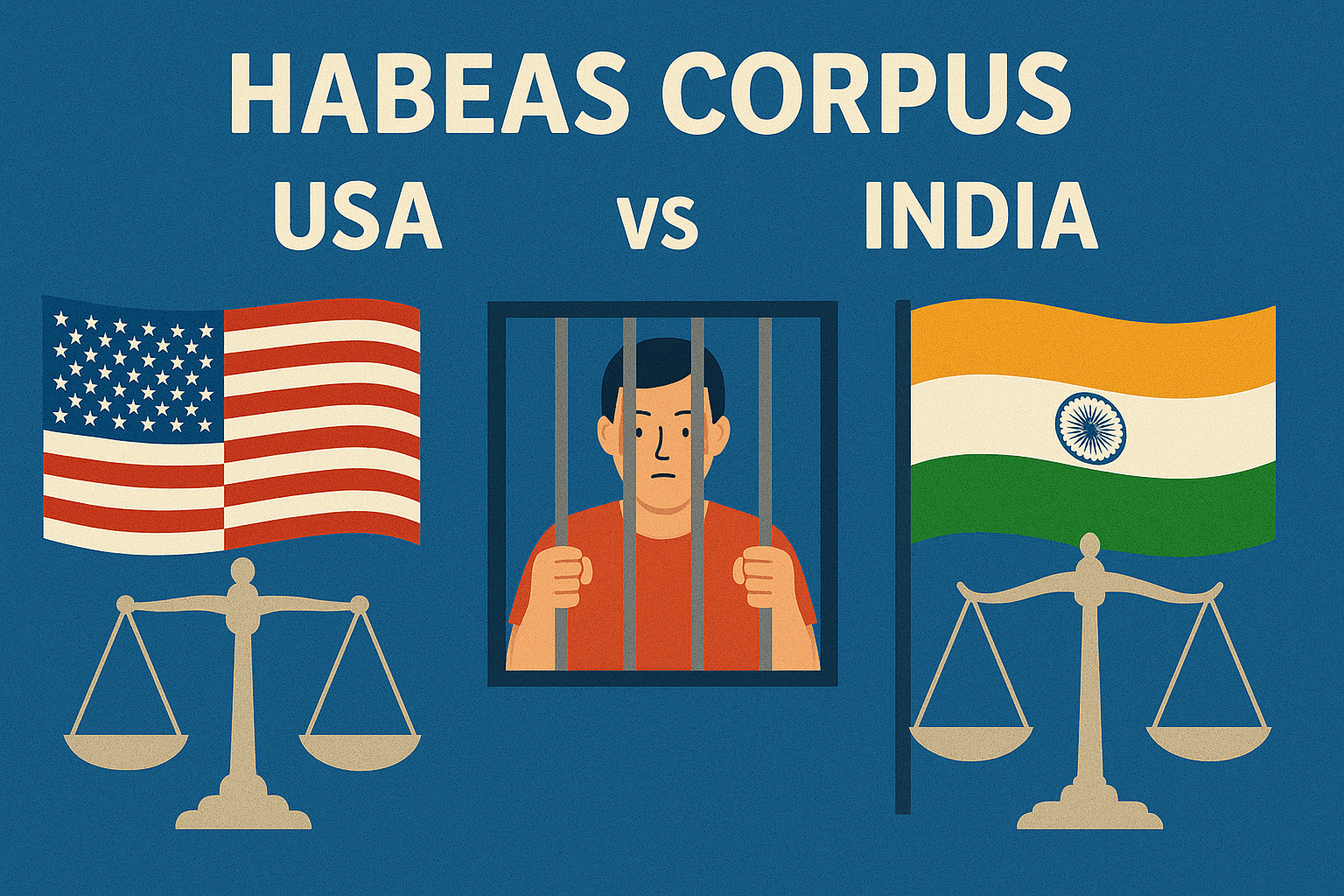White House Deputy Chief of Staff Stephen Miller told reporters outside the White House on a Friday that President Donald Trump was considering suspending habeas corpus as part of efforts to significantly reduce immigration. Miller stated that the administration was “actively looking at” this measure, suggesting it could be constitutionally permissible. He quoted the Constitution, saying it allows for the suspension of the writ of habeas corpus “in a time of invasion” as justification for exploring the option.
1. Constitutional Basis
India
- Article 32 of the Constitution empowers the Supreme Court to issue writs for the enforcement of Fundamental Rights, including habeas corpus.
- Article 226 empowers High Courts with broader jurisdiction to issue writs, not limited to Fundamental Rights.
- Habeas corpus is directly enforceable and considered the “heart and soul” of the Constitution (Dr. B.R. Ambedkar).
USA
- Rooted in Article I, Section 9, Clause 2 of the U.S. Constitution, known as the Suspension Clause:
“The privilege of the writ of habeas corpus shall not be suspended, unless when in cases of rebellion or invasion the public safety may require it.” - While not explicitly termed a “fundamental right,” it is considered a cornerstone of due process under the Fifth and Fourteenth Amendments.
- Procedures were originally codified in the Judiciary Act of 1789.
2. Suspension of Habeas Corpus
India
- Suspension is allowed only during a constitutionally declared national emergency (Article 352).
- During an emergency, under Article 359, the right to move any court for the enforcement of certain Fundamental Rights can be suspended.
- Most controversially suspended during the Emergency of 1975–77.
- Requires Parliamentary approval and is subject to judicial review post-44th Amendment (1978), which made the Right to Life and Liberty (Article 21) non-suspendable.
USA
- Can be suspended only in cases of rebellion or invasion, and only if public safety requires it.
- Historically invoked during the Civil War (by President Lincoln), World War II (internment of Japanese Americans), and post-9/11 for Guantánamo Bay detainees.
- Congressional authorization is required, though this has been contentious (e.g., 2006 Military Commissions Act curtailed habeas for “enemy combatants” before being partly overturned in Boumediene).
3. Scope & Judicial Approach
India
- Broader scope: Used not just for unlawful detention, but also for issues like custodial torture, missing persons, and trafficking victims.
- Suo motu cognizance: Courts can take up cases without formal petitions.
- Public Interest Litigation (PIL) framework allows third parties (e.g., NGOs, activists) to file for detainees who are unable to approach courts.
USA
- Narrower functional scope, mainly to test the legality of detentions (often in criminal, immigration, or military contexts).
- Petition must typically be filed by the detainee or an immediate representative.
- No equivalent of India’s PIL system; standing is strictly interpreted.
4. Landmark Cases
India
- ADM Jabalpur v. Shivkant Shukla (1976): Held that habeas corpus could be suspended during Emergency—infamously upheld Executive overreach. Later overruled in Justice K.S. Puttaswamy (2017), which reaffirmed the inviolability of liberty.
- Nilabati Behera v. State of Orissa (1993): Recognized monetary compensation for custodial death as a remedy under Article 21.
- Sunil Batra v. Delhi Administration (1980): Extended habeas corpus to address prisoner rights and torture.
USA
- Boumediene v. Bush (2008): Recognized Guantánamo Bay detainees’ right to file habeas corpus petitions, even though they were outside U.S. sovereign territory.
- Hamdi v. Rumsfeld (2004): U.S. citizens labeled as “enemy combatants” are entitled to due process, including habeas hearings.
- Ex parte Milligan (1866): Ruled that military tribunals cannot try civilians when civil courts are open, even during war.
5. Remedies & Compensation
India
- Courts can directly award compensation in habeas cases—unique among common law countries.
- Examples: ₹10 lakhs or more in wrongful detention and custodial death cases.
- The process is relatively swift, often treated with urgency, though not immune to procedural delays.
USA
- No direct compensation via habeas corpus.
- Detainees must file civil rights lawsuits under 42 U.S.C. § 1983 or Bivens actions against federal officials.
- Often a long-drawn process, especially in national security-related detentions (e.g., Guantánamo cases).



